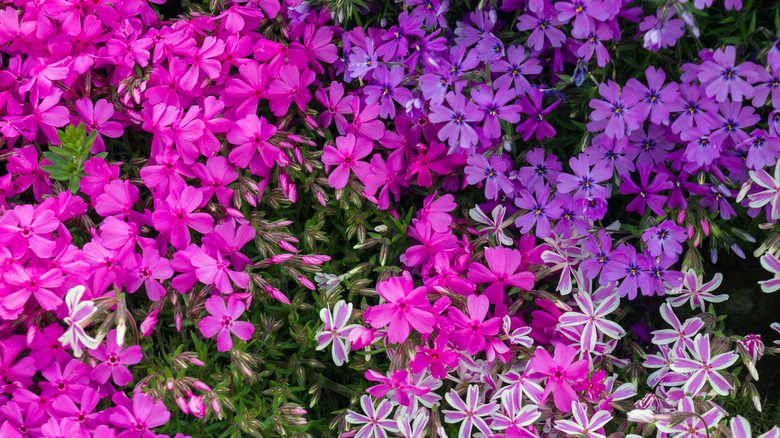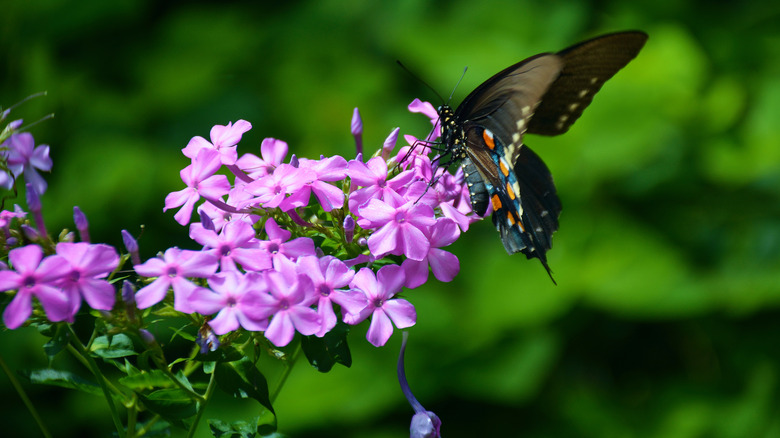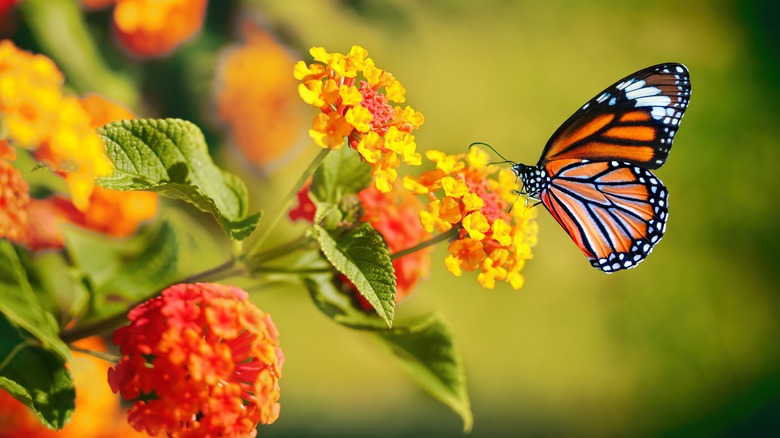The Popular Flowering Ground Cover That Hummingbirds And Butterflies Love
Pollinators are critical to the ecosystem. Bees, butterflies, moths, and hummingbirds are essential in the pollination process because many plants cannot pollinate autonomously. Native species fly around looking for food or nectar, land on an appetizing flower, and get covered in pollen as they eat. Then, when they fly to another plant, the pollen falls off, thus pollinating the other plant. Some flowers are more tempting than others. For example, the ground-covering creeping phlox is a brightly-colored flower that butterflies and hummingbirds love.
Creeping phlox, or phlox subulata, is native to the central and eastern parts of North America. If you're in one of these regions, you should strongly consider growing this native plant. Native plants are the food source of local and migrating pollinators. Growing a variety of native flowers is like putting out a buffet for the pollinators in your area. It's also a relaxing activity for you. Butterfly gardens are popular at botanical gardens throughout the world for their tranquility. By planting creeping phlox, you'll get to enjoy your own private butterfly sanctuary.
Pollinators love creeping phlox
Creeping phlox is a ground-covering plant, which means that it spreads more than it grows vertically. Ground-covering plants are beneficial for a number of reasons, but this one is especially so because they are attractive to butterflies and hummingbirds. It comes in multiple colors, but the more vivid pinks are the most popular. Red-leaning flowers are easier for winged creatures to spot when flying. Then, they land for some delicious nectar.
An early spring-bloomer, creeping phlox offers nutrition for the first butterflies of the season. Species like mourning cloak, eastern comma, spring azure, and red admiral all emerge early in the season. It takes a lot of energy to leave the cocoon and even more to fly, so they need a lot of nectar. Creeping phlox will attract butterflies to your garden and provide the energy they need. Hummingbirds are no different. When migrating, they can fly for up to twenty hours straight. A pollinator garden with creeping phlox could be just what a passing bird needs to continue their journey.
Grow your own pollinator garden
A pollinator garden is not simply a collection of pretty flowers; it's a gift to your local ecosystem. Flowers that provide nectar sustain butterflies, moths, hummingbirds, and bees so that they may continue to pollinate local flora. Starting your own pollinator garden with native plants not only contributes to the success of regional wildlife, it gives you the opportunity to observe the beauty of the lifecycle.
Your area has its own native plants. For example, the popular snack, butterfly milkweed, is native throughout the United States, but not to the western states. So those on the Pacific coast could grow blue blossoms or California goldenrod instead. Consult field guides to learn about the butterflies and hummingbirds in your area and grow flowers they're known to enjoy. The more enticing your flowers are, the more likely you are to catch a glimpse of these beautiful creatures.



